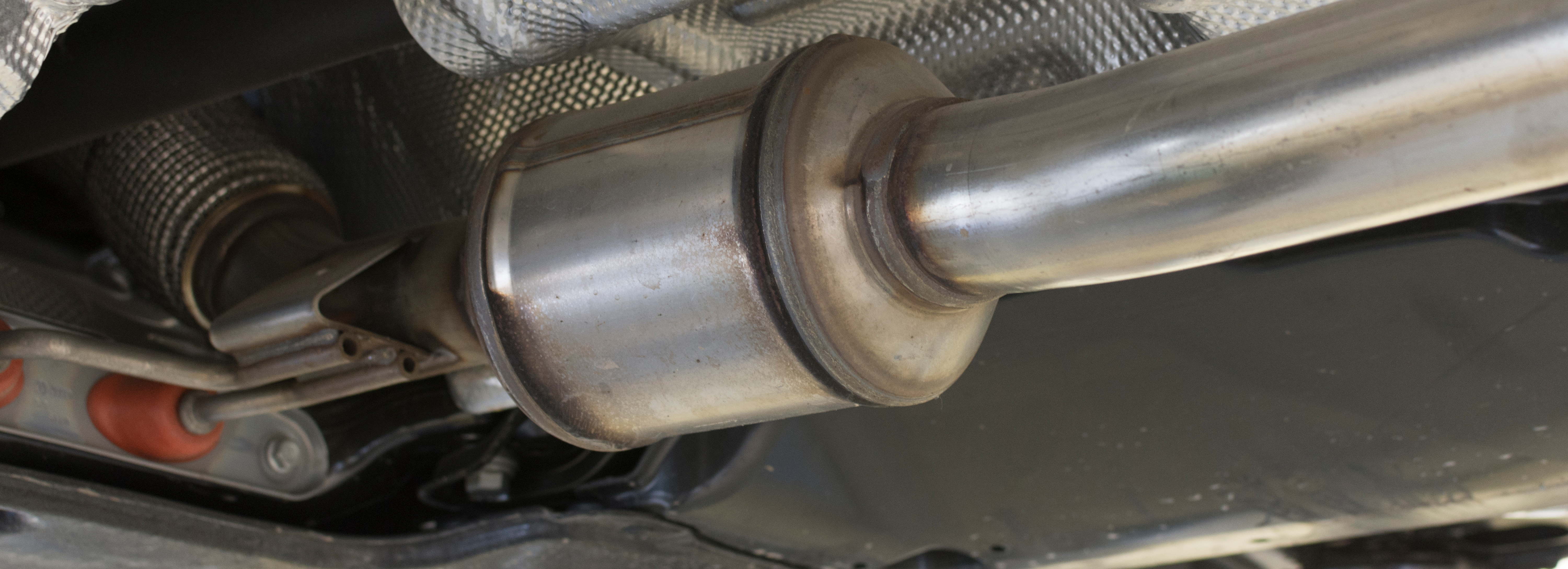What is a catalytic converter?
15 February 2022
Catalytic converters (also referred to as ‘cats') have been widely used in vehicle production for over 50 years, and are designed to reduce the emissions produced by your car.
Most people probably don’t even know that their car has one, but it turns out that they are quite valuable and there were some recent cases in the news of criminals getting under cars and stealing the part to sell on for a healthy profit.
Why do vehicles need one to start with?
Catalytic converters change harmful substances in a car’s exhaust gasses, into less harmful substances like carbon dioxide and water vapor by means of chemical reactions.
As part of normal vehicle fuel combustion, emissions are expelled from the exhaust, with the main three being nitrogen gas, carbon dioxide and water vapor.
Other harmful emissions can be found in the exhaust, such as carbon monoxide - a poisonous gas that is both colourless and odourless. Hydrocarbons or Volatile Organic Compounds (VOCs) are a major component of smog produced mostly from evaporated unburned fuel and nitrogen oxides. These are a contributor to smog and acid rain, which can cause irritation to human mucus membranes.
So how do catalytic converters work?

In chemistry, a catalyst is a substance that causes or accelerates a chemical reaction without itself being affected. Catalysts participate in the reactions, but are neither reactants nor products of the reaction that they catalyse.
In the catalytic converter, there are two different types of catalyst at work: a reduction catalyst, and an oxidation catalyst. Both types consist of a ceramic structure coated with a metal catalyst, usually platinum, rhodium and/or palladium. The idea is to create a structure that exposes the maximum surface area of catalyst to the exhaust stream, while also minimises the amount of catalyst required as the materials are extremely expensive. Some of the newest converters have even started to use gold mixed with the more traditional catalysts.
Types of catalytic converters
There are various types of catalytic converters. Firstly, there’s a simple ‘two-way’ oxidation catalytic converter which works to turn carbon monoxide into carbon dioxide and hydrocarbons, which are basically particles of unburnt fuel, to carbon dioxide and water.
There’s also more advanced ‘three-way’ catalytic converters, which are fitted to modern cars and do the same as the above while also reducing emissions of nitric oxide and nitrogen dioxide which, together, are more commonly known as ‘NOx’ - a major cause of localised air pollution.
Different for diesel
Diesel vehicles typically have special catalytic converters to cope with the specific emissions from compression ignition diesel engines.
These Diesel Oxidation Catalyst (DOC) units are routinely paired with additional exhaust treatment technologies such as Exhaust Gas Recirculation (EGR), Diesel Particulate Filters (DPF) to trap soot and Selective Catalytic Reduction (SCR) which uses injections of Diesel Exhaust Fluid (DEF) like AdBlue urea solution to remove NOx.
So why would someone want to steal my catalytic converter?
Catalytic converters are coated with precious metals to help with the catalyst generation. Unsurprisingly, these metals can be quite lucrative for someone wanting to recycle them. For example, an ounce of Platinum fetches over $1,000 USD, whereas Palladium was valued even higher at over $2,300 USD.
Overseas, used complete converters are sold on the black market to take advantage of a supply shortage of new ones, and the circle continues. The situation is similar to what we saw over a decade ago, where criminals would strip copper wiring or pipes from houses to sell on for scrap.
Why are some more valuable than others?
It is said that hybrid cars like the Toyota Prius are more popular with thieves because they have two power sources - an electric motor and a petrol engine - so their catalytic converters are used less frequently to process pollutants. This means the metals inside them are less likely to have corroded, making them more valuable, and therefore more attractive to thieves.
It’s also said that they may contain a higher concentration of precious metals.
How do I stop theft?
- Park your car in a locked garage or a well-lit area in public view with the car close to a wall or fence to prevent the vehicle being jacked up.
- Have a vehicle alarm installed with sensors that warn you if the vehicle gets jacked up.
- Install a home security camera system and/or signs warning of CCTV cameras in operation.
- Get your car’s VIN number etched into the casing of your catalytic converter.
If you suspect your exhaust system has been tampered with or stolen, the best giveaway is that when you start the car, your exhaust system will sound very loud (almost like a tractor) and you will most likely see a warning light in the dashboard. In this case we recommend that you visit aa.co.nz/repair to find your nearest AA Auto Centre or AA Approved Repairer.
How can the AA help?
- AA Auto Centre - aa.co.nz/autocentre
- AA Roadservice - aa.co.nz/roadservice
Vehicle experts you can trust

